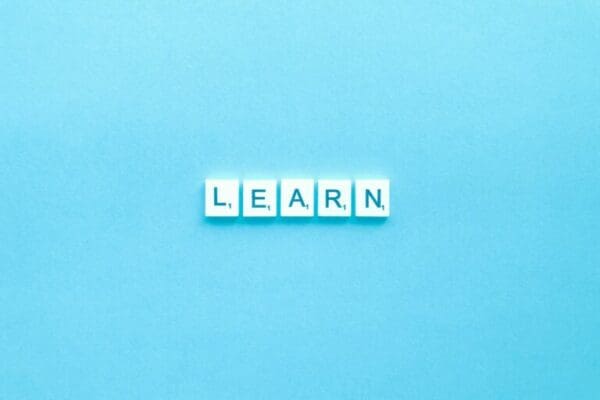Feel the Benefit of Experiential Learning
The Gibbs Reflective Cycle, also known as the Gibbs Model of Reflection and Gibbs Reflection, has six stages of exploring experiences. These stages are description, feelings, evaluation, analysis, conclusion, and action plan. Now let’s explore Gibbs’ Reflective Cycle, a useful tool that encourages critical thinking, in-depth learning, and professional development through reflection.
Jump Menu:
- How the Gibbs Reflective Cycle Works
- Examples of using the Gibbs Reflective Cycle
- Bonus: Get a Free Gibbs Reflective Cycle Template
- And much more
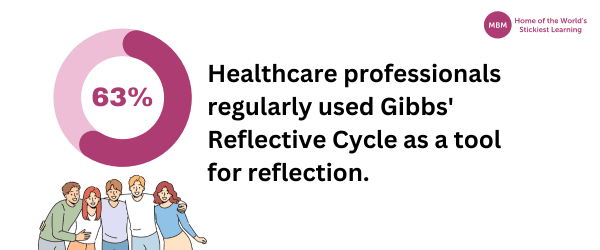
The Gibbs Reflective Cycle first became recognised in 1988 when Graham Gibbs published his book ‘Learning by Doing.’ In short, Professor Gibbs’ innovative system reinforces learning from training and experience (experiential learning) through a cyclical sequence of reflective activities. Since then, this cycle has become a seminal text for healthcare professionals, staff developers, and higher education teachers. And it’s popular in business, too.
Gibbs Reflective Cycle Diagram
Click on the image below for a larger version.
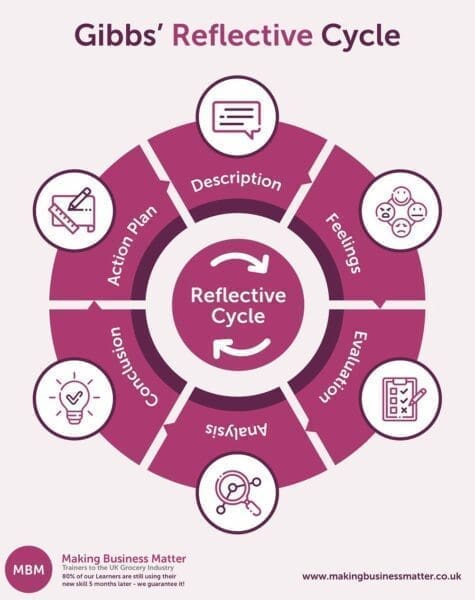
All in all, Gibbs’ Reflective Cycle leads the individual through six stages of exploring an experience. These stages are:
- Description
- Feelings
- Evaluation
- Analysis
- Conclusions
- Action plan
Reflective methods like this follow a set process and use the resulting thoughts and feelings to create generalisations. As a result, these learnings enable you to tackle new situations.
How Does the Cycle Work?
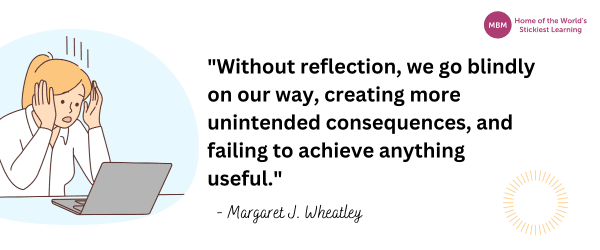
Gibbs’ reflective method systematises reflections and isolates feelings. Furthermore, the different stages create a structure that helps slow the thought processes, so people reach considered conclusions.
Gibbs created his model as “structured debriefing” to support the process of experiential learning. Moreover, he designed it as a continuous cycle of improvement for a repeated experience. But it can also be used to reflect on standalone instances.
Now one thing he did differently from other reflection systems was to acknowledge the importance of feelings in reflection. He also put greater emphasis on evaluation. Basically, this is deciding what went well in the experience and what didn’t.
Examples of the Reflective Model in Practice
1. Education:
Sarah, a teacher, faced difficulty in managing a disruptive student in her classroom. Fortunately, in applying the Gibbs Reflective Cycle, she began by detailing the situation and her initial response. As she reflected on her feelings, she recognised frustration and stress. Moving on to the analysis stage, Sarah identified a need for better classroom management strategies. Consequently, she concluded that implementing consistent discipline techniques could enhance the learning environment. As a result, she devised a plan to incorporate new classroom management methods, showcasing how the Gibbs Reflective Cycle can lead to effective teaching practices.
2. Business:
Mark, a project manager, encountered challenges in leading a team to meet tight deadlines. Despite the difficulties, by applying the Gibbs Reflective Cycle, he started by outlining the situation and his initial thoughts. Reflecting on his emotions, Mark acknowledged stress and pressure. Transitioning to the analysis stage, he identified a lack of delegation and efficient task distribution. Consequently, he concluded that better delegation could improve team efficiency. Developing on this insight, he devised a plan to assign tasks based on team members’ strengths. This example illustrates how the Gibbs Reflective Cycle can enhance leadership skills and project management effectiveness in the business realm.
3. Nursing:
In a challenging encounter with a patient, Nurse Emily turned to the Gibbs Reflective Cycle. Initially, she detailed the situation and her immediate reactions. Reflecting on her emotions, she pinpointed negative feelings that surfaced. Transitioning to analysis, Emily recognised a need to enhance her communication skills. Concluding that improved communication could yield more positive outcomes, she crafted a personal development plan. This instance illustrates the transformative power of deep reflection in nursing practice.
These examples demonstrate the ability of the Gibbs Reflective Cycle to promote learning and introspection in various fields, fostering personal and professional development.
Gibbs Reflective Cycle in Detail
Not convinced? Well, here’s a more in-depth example of a freelance journalist using Gibbs’ Cycle to reflect on a stressful assignment and what they learned.
#1. Description: What happened?

First, set the scene:
- What happened?
- When it took place
- Who was present?
- What they did
- And the outcome
A Description Stage Example of Gibbs Reflective Cycle
“I was asked to write a feature for a magazine, and given a list of PR people to request material from. It was my first feature for this editor, and I wanted to do well. They insisted I wait for the submissions until a few days before my deadline, as that was the date published in the features list. Not everyone responded, and as the deadline approached, the submissions were slow to arrive, with people away on summer holidays. I had enough material to write the piece, except for a key section that I had agreed with one contact I would earmark their copy for. And that was where it got fraught.
“The day my article was due, my contact’s client had just returned from holiday but hadn’t approved their copy, leaving me with a hole and nothing to fill it. My editor was chasing, and I had to request an extension. I had allowed enough time to write the piece, but not factored in for a last-minute hiccup. Mercifully, at noon on the deadline day, something else arrived that I could use for the remaining section, so I was only a day late. My editor was happy because the got the piece they wanted, and the article looked great when it was published. The person who had caused the delay wrote the editor a charming note apologising, so it was a win-win.”
#2. Feelings: What were you thinking and feeling at the time?

After that, review your thoughts about the experience:
- How did I feel at the time?
- What did I think?
- How did my emotions, beliefs and values affect my feelings?
- What do I think other people were feeling?
- And how did I feel about the experience afterwards?
A Feeling Stage Example of Gibbs Reflective Cycle
“I was anxious as the deadline approached. And I would have preferred people to send their submissions a week earlier, so I could chase the late ones, but the editor insisted otherwise, and I had no choice. I was feeling foolish for exposing myself like this by agreeing to wait for the missing copy, but there wasn’t anything to put in its place.”
#3. Evaluation: What was good and bad about the experience?
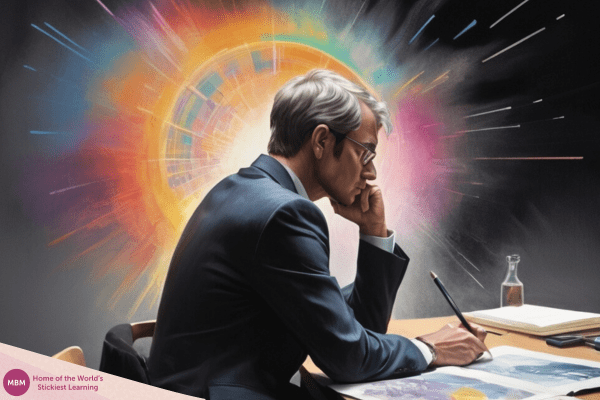
Now how did it go? Focus on both the positive and negative, even if it is mainly one or the other.
- What was good and what was bad about the experience?
- Which bits went well? What didn’t?
- Were my contributions positive or negative?
- If it was difficult for me, did I feel the situation was resolved afterwards, so I benefited?
An Evaluation Stage Example of Gibbs Reflective Cycle
“It was bad to feel exposed and hoping some material would arrive miraculously at the last minute, but it also felt good communicating with people to resolve it and, when I was feeling stressed, stepping back and calming myself. I can look back on the experience now and see it in terms of the soft skills it made me use.”
#4. Analysis: What sense can you make of the situation?
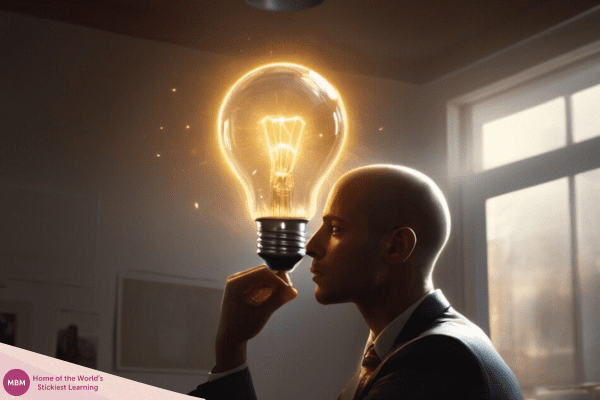
So this involves making sense of what happened and developing an understanding:
- Why did things go well, or badly?
- Could I have acted differently?
- And what might have helped or improved things?
An Analysis Stage Example of Gibbs Reflective Cycle
“By setting it out like this in this reflection, particularly my feelings, I can make perfect sense of it now and see how I got into that uncomfortable position. I was extremely aware of Brene Brown’s work on vulnerability; Steven R. Covey’s 6th Habit of Highly Effective People, Co-Creation; and in terms of resilience, holding onto the idea that whatever happened, I would be okay. It wasn’t what was happening that mattered, but how I resolved it.”
#5. Conclusion: What else could you have done?
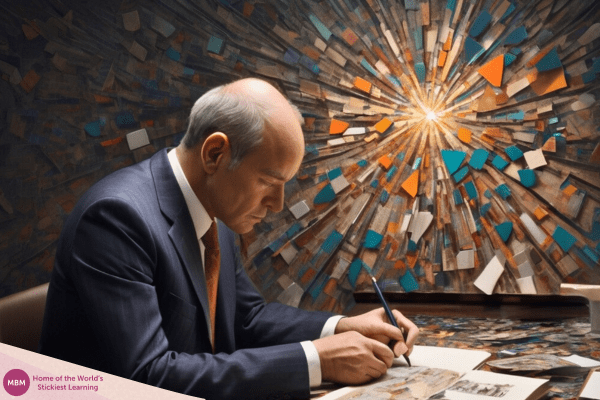
Gibb’s reflective cycle proposed two possible conclusions from the Cycle: a personal one for the learner and a general one for the organisation doing the training:
- What have I/we learnt?
- From there, what can I /we do better now?
- Could/should I/we have done anything differently?
- What skills do I/we need to handle this better in future?
A Conclusion Stage Example of Gibbs Reflective Cycle
“I could have said to my editor I wanted people to send me their submissions a week earlier. Or, I could have ignored him and just given them the earlier date. I didn’t do either, I wanted to do well. I could have also approached more people beside the ones I was specifically asked to contact. Most of all, I could also have avoided pinning my hopes on a particular person coming through with the important section.”
#6. Action Plan: What will you do next time?
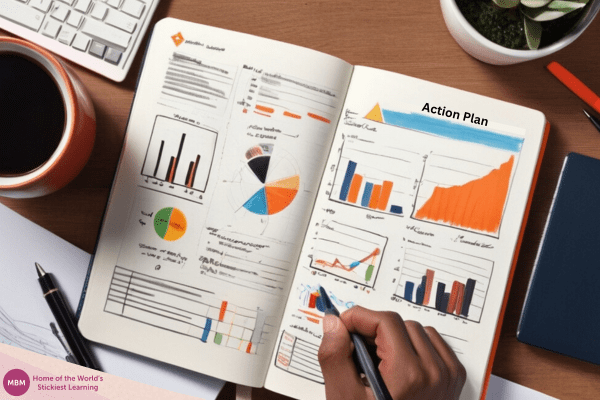
Lastly, this summarises everything you need to know and do to remember the learning, and improve for next time:
- Where/how can I use my new knowledge and experience?
- How will I adapt my actions and improve my skills?
- If the same thing happens again, what will I do differently?
An Action Plan Stage Example of Gibbs Reflective Cycle
“Learn from this experience and negotiate with the editor about the submission deadline. Or just ask for the material sooner, ahead of the deadline given, and approach other people beside the ones on the core list. And take note of my conclusion about pinning hopes on specific people. As Steven R. Covey would say about his Habit #7 of Highly Effective People, Sharpen the Saw – do it again, and be better.”
BONUS: The Gibbs Reflective Cycle Template
Use Gibbs’ simple, yet effective template of 6 questions to reflect on what you did well and what you could do better.
Access: Click on the image below to open the template in a high-resolution PDF that you can print.
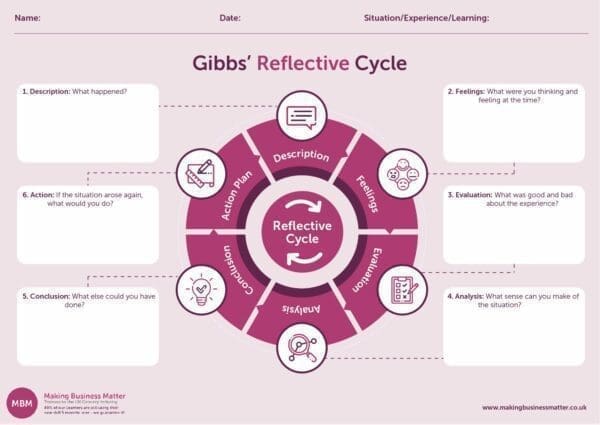
More Facts, and Compelling Details to Ignite Your Curiosity…
#1) Pros and Cons of Gibbs Reflective Cycle
Advantages:
- Firstly, the Gibbs model of reflection is easy to understand and easy to use.
- Also, it allows you to learn over time, based on your experiences.
- And it helps you develop more balanced and accurate judgement.
Possible Disadvantages:
- Depending on the individual, reflections with the Gibbs Cycle may be superficial, not deep. This will affect the potential for personal or collective development.
- The process doesn’t take into account any assumptions people might hold about the experience. Nor does it consider the need to look at different perspectives.
- Lastly, reflection doesn’t necessarily lead to people coming out with changed assumptions, perspectives or practices. As with other reflective processes like client-centred therapy, the individual has to commit to making change happen, or they won’t see the benefit.
Keep reading for other models you can use besides Gibbs.
#2) How Does Reflection Help?
Basically, reflection allows people to make sense of an experience in relation to themselves and others, and the background circumstances. The process enables them to reimagine the experience, for future personal or business benefit. You can see why the Gibbs Reflective Cycle is so important.

6 Ways Reflection Can Help:
- First of all, it allows you to improve your working practice to gain better outcomes in the future.
- Improves your performance and your skills.
- Increases self-awareness of your abilities and attributes.
- Evaluate the quality and success of your action plans.
- Apply theoretical knowledge of behaviour and soft skills, like listening to real experiences, and expanding your understanding.
- And lastly, develop and expand your employability.
#3) Who is Graham Gibbs?
Graham Gibbs has had a distinguished career in the field of learning development. Also, his book ‘Learning by Doing: A Guide to Teaching and Learning Methods’ remains the definitive manual on reflective learning.
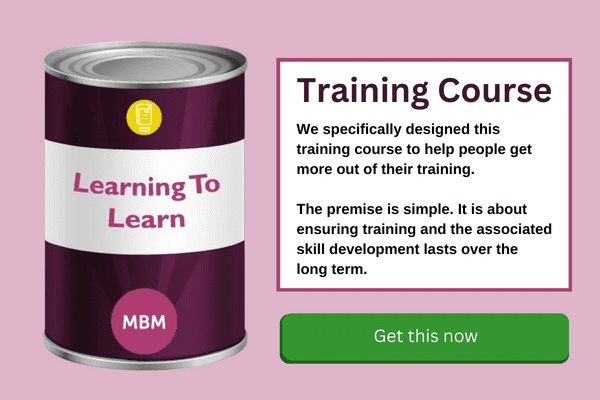
#4) What is Reflective Learning?
In short, reflective learning involves the learner stepping back from their learning experiences and applying critical thinking skills to reach conclusions. It’s an intentional process. After all, success requires commitment.
#5) What are Reflective Models?
A reflective model is a structured process used to guide personal and situational analysis and improvement. Furthermore, reflection emphasises awareness of our knowledge, past experiences, and beliefs.
Why Do We Need Reflective Methods?
Reflecting on a learning experience helps improve our performance while it’s happening. Additionally, it helps us do better in the future. But without this reflection, it’s hard to improve. And if you don’t reflect on the experience, chances are you’ll forget and lose the possible learnings.
Here are a few reflective models besides Gibbs:
- Kolb’s Experiential Learning Cycle: In essence, this reflection model is based on four stages – Concrete Experience, Reflective Observation, Abstract Conceptualisation, and Active Experimentation.
- Johns’ Model of Reflection: This reflective model consists of five cue questions to guide reflection – Description, Reflection, Influencing Factors, Evaluation, and Learning.
- Schön’s Reflective Practitioner Model: Not that focuses on reflection-in-action and reflection-on-action in professional practice.
- Rolfe’s Framework for Reflexive Practice: Now this model involves three stages – What? So What? Now What? Although it might appear less complex than the Gibbs Reflective Cycle, some believe it offers greater flexibility and adaptability.
- Driscoll’s Model of Reflection: In its simplicity, it comprises three questions – What? So What? Now What?
- Atkins and Murphy’s Model of Reflection: Now this features five prompts for reflection – Description, feelings, evaluation, analysis, and conclusion.
#6) Get the Definitive Word From the Man Himself
In general, Gibbs’ Reflective Cycle and reflection are powerful tools. Furthermore, when used effectively, the process can facilitate significant personal and professional growth. But at the outset, it can feel challenging for leaders and managers to take on board and incorporate it into their training.
The most accessible book on all this is Graham Gibbs’ Learning by Doing: A Guide to Teaching and Learning Methods. Sadly, it isn’t available in hard copy on Amazon. However, you and your colleagues can download the 2013 online edition as a free eBook from Oxford Brookes University. Have it on your phones!
‘Learning by Doing’ is written to be used as a resource, rather than a book to read right through. It starts by explaining the underlying concepts and then explores practical ideas for teaching methods and designing courses. Additionally, there’s plenty of follow-up information to help you apply the ideas. You’ll find all the details you could possibly want. And it’s an inaccessible language.
There are also various case studies of applications of experiential learning methods, including self-directed learning in office practice. But reading the book on its own isn’t enough. Note that to really learn about experiential methods, you need to be ‘Learning by Doing’! Use these methods and experience them. Follow Gibbs’ Cycle. Reflect on their use and then experiment again.
#7) Reflection #101
Now there’s a lot here to take in. But if you’d prefer to start with something simpler and then work up to using Gibbs’ book. That’s fine. The 5 R’s might help. So let’s take a look.
The 5 R’s of Gibbs’ Reflective Cycle
This is a framework identified by the researchers Bain et al in 2002, to help people make sense of experience. And the elements ‘R’:
- Reporting: First, recall what happened. What did the situation involve?
- Responding: Now describe your observations, feelings, and questions.
- Reasoning: What are the significant factors underlying the situation? How do they relate to what happened and what the situation involved?
- Relating: Explain your connection with the situation. What are your relevant experience, skills, knowledge and understanding?
- Reconstructing: Lastly, describe your deeper understanding of the situation after all this, based on this thought process.
Parting Thoughts to Ponder
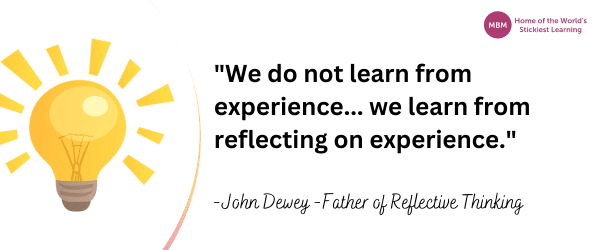
After reading this, if you’re a boss, could Gibbs’ Reflective Cycle help you develop your team? Or are you an employee in a business where there’s no Continuous Professional Development? Don’t let that trigger ‘FOMO’ (Fear of Missing Out!). All in all, Gibbs’ insights can help you reflect on your skills development, and plan your next move.
And last, of all, don’t forget the final tip in the 6 Ways just now. You can also use Gibbs’ Reflective Cycle to boost your employability. Remember that this stuff can help you get a better job. So reflect on that!
Updated on: March 12, 2024



